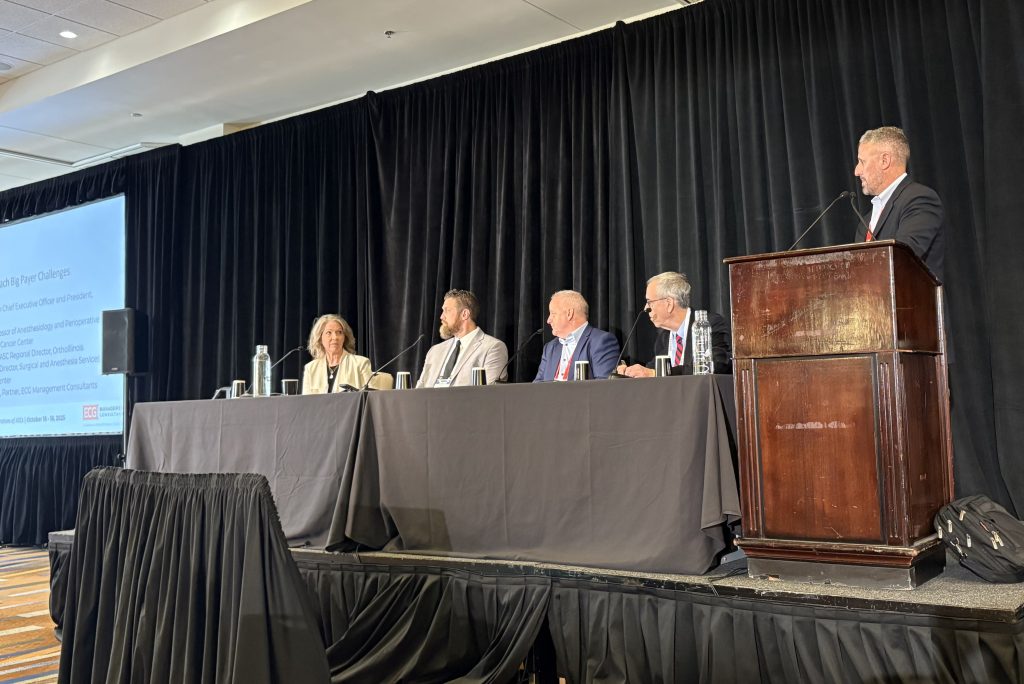Ambulatory surgery centers (ASCs) find themselves at a critical juncture in healthcare. As payer strategies evolve and artificial intelligence (AI) reshapes reimbursement processes, ASCs must adapt quickly to protect margins, maintain access, and advocate for their value.
At Becker’s Healthcare’s 31st Annual Meeting: The Business and Operations of ASCs, the prevailing attitude was one of continued optimism about ASCs and the value they bring to the healthcare ecosystem—namely, greater efficiency, lower costs, and higher satisfaction patients and surgeons. But friction between payers and ASCs was a familiar theme throughout the conference, along with challenges and opportunities around AI and concerns about ongoing access to anesthesia services.
ECG partner Matt Kilton led two panel discussion at the conference—one with a group of ASC leaders, and another with ECG’s ASC experts, Amy Coletti, Kevin Dowdy, and Leslie Krasne. Below are five themes from those panels, including the most pressing challenges and emerging strategies for ASCs in today’s managed care environment.
1. AI is changing the game.
AI has become a powerful tool for payers, enabling them to audit claims more aggressively and flag issues that previously went unnoticed. This has led to a spike in denials and increased administrative burdens for ASCs.
But AI isn’t just for payers. ASCs are using the technology to proactively flag what payers are flagging. It’s become a matter of staying one step ahead, and ASCs that can detect potential issues before payers do can ward off denials and ultimately strengthen their position in negotiations.

2. Data is everything.
Across both panels, one message was clear: data drives negotiations. Price transparency data, in particular, is changing the equation for ASCs. While panelists noted that price transparency data can be hard to find and difficult to decipher, investing in technology (e.g., AI) to collect and interpret it is enabling ASCs to benchmark against competitors and demonstrate cost savings.
ASCs that gather this data and bring it to the contract negotiations stand to strengthen their organization’s position. To paraphrase one panelist: If you don’t bring data to the table, you won’t even have a seat at it.
- Use price transparency to show payers and patients the value of ASC care.
- Present data before payers do—it gives you the advantage.
- Speak the payer’s language—data, benchmarks, and outcomes.
3. Everyone’s worried about anesthesia.
Anesthesia coverage is a growing concern. Downward pressure on reimbursement for anesthesiologists and CRNAs is creating what one panelist characterized as “a de facto tax” on ASCs, which are having to subsidize anesthesia services. Some ASCs are integrating anesthesia providers into ownership structures to align incentives and boost performance.
Meanwhile, anesthesiologists and CRNAs are in short supply, with retirements outpacing new entrants to the workforce. That problem is not unique to ASCs, but as more than one panelist noted, having an efficient anesthesia team can improve margins and patient flow.
- Start cases on time.
- Turn over rooms efficiently.
- Keep providers and patients satisfied.
4. Read your contracts (and all payer communications).
More than ever, ASCs need to be proactive in contract management. Payers are holding fast to language around renewals and renewal timelines, and missing a deadline could lock your ASC into unfavorable terms. Panelists advised scrutinizing every contract, amendment, and notification; small clauses can cost big money.
- Read every contract and amendment carefully. What appears to be a rate increase on one page might be offset by a rate cut elsewhere in the contract.
- Watch for changing notification language. A regrouping of CPT codes could result in a rate change without renegotiating the contract.
- Renegotiate every year. Boosts to reimbursement are incremental, so if your ASC has been paid well below market, it will take time to catch up (i.e., you won’t get a 50% increase overnight).

5. Educate, advocate, and collaborate.
Across both panels (and throughout the conference, actually), a frequent refrain was the need for ASCs to flex their collective muscles—demonstrating to insurers, policymakers, and patients that they offer better care at lower costs and have the data to prove it.
That begins with education. ASCs need to educate payers on the efficiencies gained by performing certain procedures in the ASC as opposed to the hospital. Show them the data that details what a procedure costs in different settings. Many higher-acuity cases must remain in the hospital setting, but those that can be performed safely in an ASC represent savings for insurers and patients.
ASCs also need to educate legislators about the realities of reimbursement and the value ASCs provide—not just in cost savings, but in quality, efficiency, and patient satisfaction. Patients, too, can be a means of engagement. Empower patients with price transparency data; their advocacy can influence payer and policy decisions.
Ultimately, panelists insisted that ASCs and other organizations in the ASC ecosystem are stronger together. By exchanging ideas at conferences like this one and collaborating through industry groups such as ASCA, ASCs can amplify their collective voice.
ASCs have the power to reshape outpatient care, but in the face of so many disparate forces, unity might be their greatest strength.

